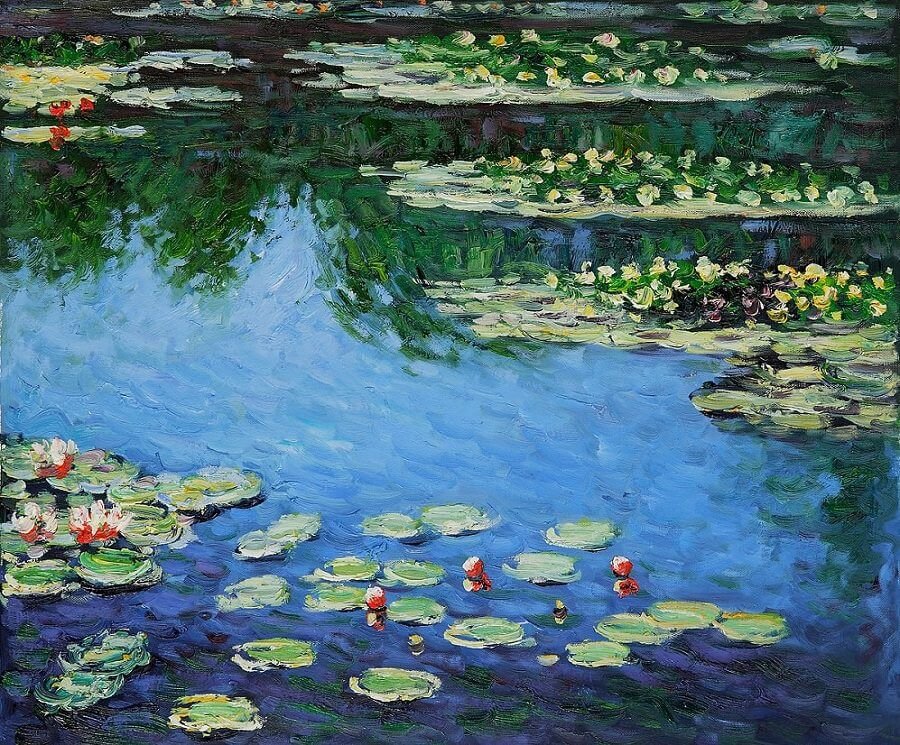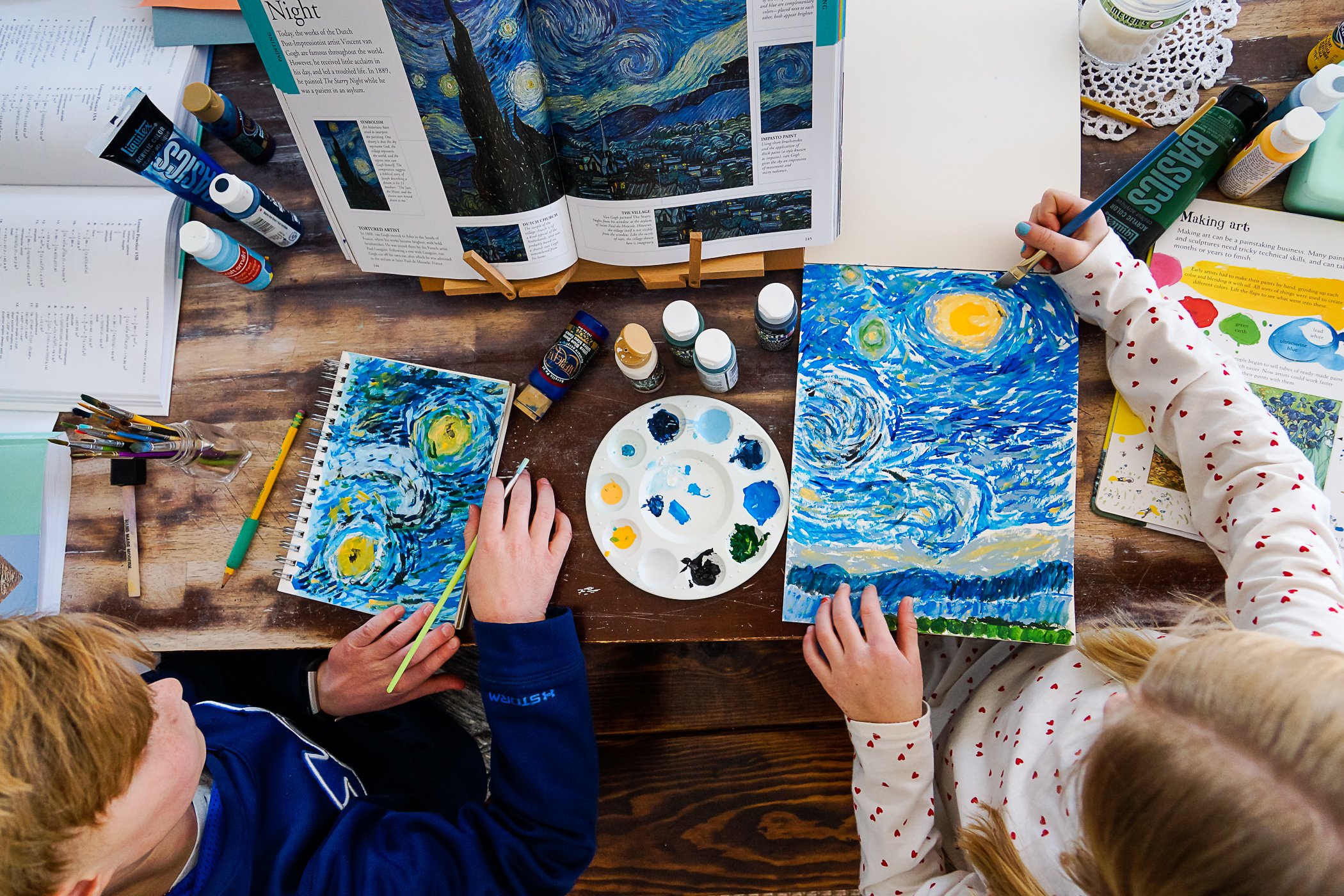Is Printing Famous Paintings Illegal? All About Plagiarism
If you want stunning art in your home, it’s tempting to copy art prints from famous paintings. But this is an illegal activity and one that you should refrain from doing. Instead, look to purchase new art from rising artists to find affordable, stunning prints.
Get insights into plagiarism laws for art in the U.S. to avoid purchasing illegal art unknowingly or accidentally stealing from the artist by making unlawful copies of a piece of art from your home.
Artwork Copyright Laws
Legally, you can copy the art of others if you’re a skilled artist and want to create a replica for your home. However, selling the painting as if it were an original by that artist is illegal.
Instead, make it perfectly clear when selling the art that you painted it. And don’t try to add in the original artist’s name anywhere, like saying it’s in the style of Monet. Make the attribution on your art clear and bold.
Do not attempt to copy the signature of the artist anywhere on the painting. Simply moving it to another location does not help you get around copyright laws.
If the work is substantially similar to the original work, you could face charges for plagiarism. So before you sell a lookalike painting, make sure there is ample difference between your version and that of the original artist.
Selling one or two lookalike paintings that are substantially different from the original probably won’t attract any attention and falls in a legal gray area for plagiarism. But once you sell many copies of the same painting that you’ve essentially copied, you’re degrading the resale value of the original painting. That’s not fair to the original artist, which gives them the rights to pursue damages against you for your plagiarism.
The original artist owns the rights to a print so long as they can prove those rights. That means that the artist needs to place a watermark or copyright symbol on their work. On famous art prints, this is generally the artist’s signature. However, the absence of such marks does not suddenly make the art free to be copied or distributed. It just makes it more challenging for the artist to prove their rights in case of a lawsuit.
Copyright for Famous Art Prints
As you’re reading this, you’re probably recalling seeing replicas of Claude Monet’s “Blue Water Lilies” or “Bouquet of Sunflowers” at your local home furnishings store. That’s because the copyright on famous art lasts for the artist’s lifetime plus 70 years after their death. Then the art becomes public domain unless the artist sells those rights.
Just to be clear though, that does not mean you can add 70 years to the date the artist produced the painting. You must add 70 years from the date of the artist’s death to ensure the painting is now public domain.
The Copyright Act of 1976 has a provision for copying art in section 107 for fair use for teaching, news, research, commentary and more.
Can I Ever Copy Famous Artwork?
There are times when it is appropriate to copy a famous painting or artwork. One such time would be if you’re trying to learn how to accomplish various techniques or appearances in your art. I do this with my kiddos.
To become a better artist, you often have to turn to the experts to see how they did things. In that case, you might work to replicate a famous painting to try your hand at those techniques. It’s like the artist becomes the teacher in those cases.
But once you’ve completed that learning experience, you can’t turn around and hang the painting in a museum or sell it online as if it were the original. That’s where your rights as a student end.
Another legal opportunity to copy a famous artist’s work is if you obtain permission to do so. Companies often enter into contracts with artists to replicate their work and sell it. These contracts often set forth a timeframe for how long the company can replicate the work or how many replicas they can produce. At the end of that period, the company must either obtain a new contract or discontinue producing the art to avoid legal ramifications.
Looking for a Wildlife Paintings in Watercolor?
However, in these situations, you aren’t getting something for nothing. The artist will require royalties on the art you sell or might require all payment upfront for such a contract. This is one reason why many modern artists hire agents to help manage their rights and oversee their contracts.
Some artists have no interest in these types of contracts. They want their artwork to be exclusive and have no replicas. In that case, it’s best to seek out partnerships with other artists with a similar style.
How Can I Get Art Prints of Famous Paintings?
For most people, purchasing original art from famous artists is unattainable. That’s because these paintings cost hundreds of thousands of dollars, if not more.
If you want original artwork in your home, the better option is to look to local artists or purchase from Heidi Joy’s website. You’ll find these paintings online or at local art galleries designed to help artists display and market their work.
Many famous pieces of art are now public domain. That’s because the artists are from hundreds of years ago. So now you can get prints of their work at local stores. Just know that the prints will lack some of the charm and depth of the original work. That’s because it won’t have brush marks on canvas but will instead be a digital replication of the artwork.
Quick Summary of Artwork Copyrights
That was a lot to digest, wasn’t it?! On the surface, the question of artwork legality seems simple, but it’s quite nuanced. To make these concepts simpler to understand, here’s a quick look at the highlights of what you can and cannot do when it comes to art prints of famous paintings.
What you can do:
Replicate a piece of art for learning purposes or personal use
Enter into a contract with the original artist to sell replicas of their artwork
Look for artwork that has entered the public domain because it is 70 years after the artist's death
Use images of famous artwork for teaching purposes
Purchase replicas from companies that have the rights from the artist or who have made replicas once the art enters public domain
What you can’t do:
Copy and sell a painting – either by using your art skills or by digitally reproducing it – that you do not own the rights
Pass of your paintings and sell them as the work of a famous artist
Look for art that is 70 years after its original production date to sell. It MUST be 70 years after the artist’s death for the artwork to be public domain
Sell a piece of art that you replicated as a student
Any attempt to deceive a person to make it seem as though your art is that of someone else
All artwork that you find on Heidi Joy’s website is her personal work that she owns the rights to. When you purchase from Heidi, you’re supporting an artist and fueling her passion to bring nature to life. Shop the broad collection of nature calendars, note cards and art prints to bring art into your home - legally.




